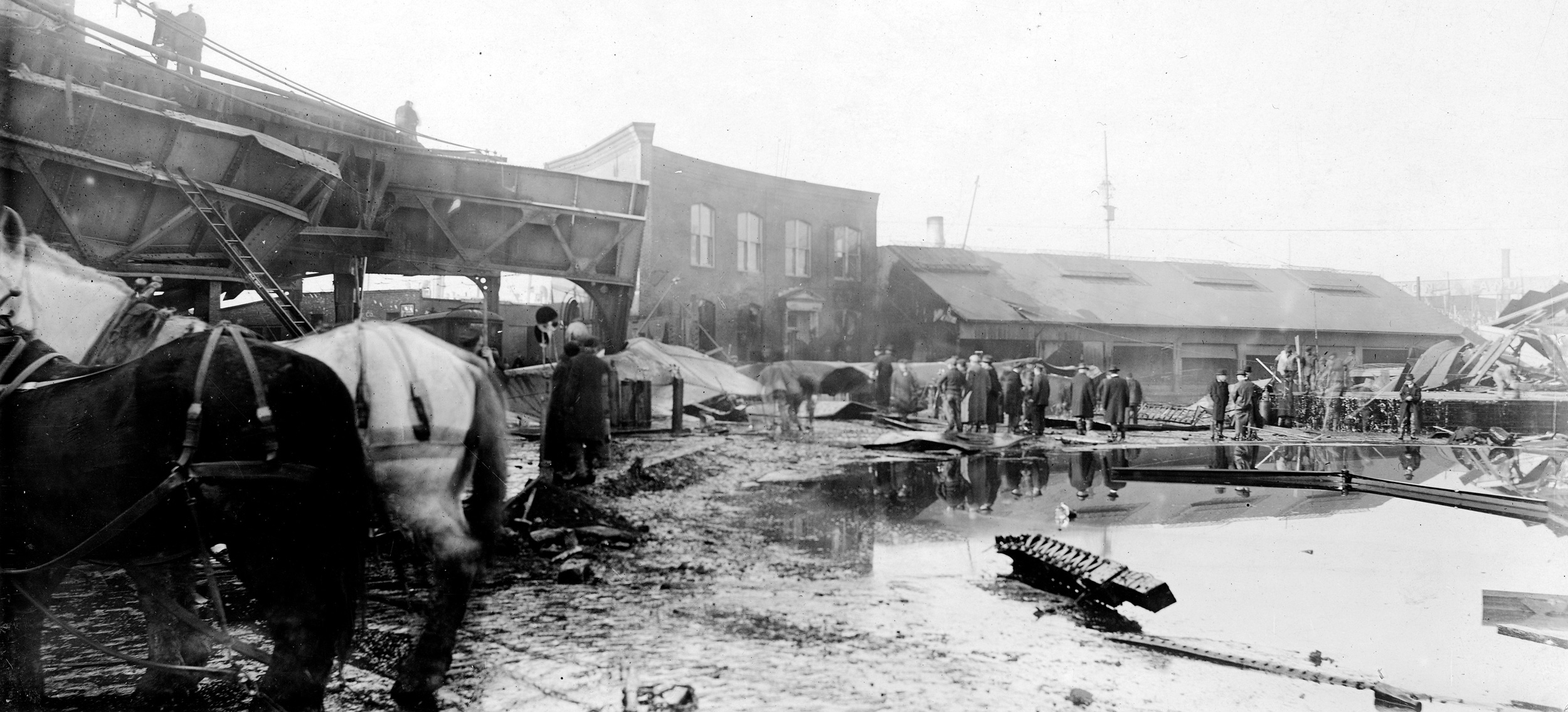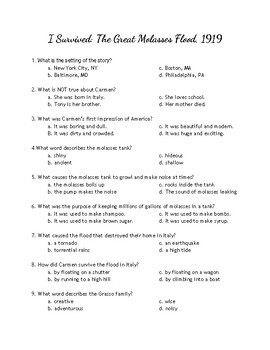
You wouldn’t see a ship unloading cargo in this part of the North End, and you’d hardly think of Cambridge-where molasses from the tank was destined-for industrial-scale distillation of alcohol. It’s entire swaths of the city having a wholly different character.

It’s not just which buildings are still here and which aren’t. To recall the molasses flood is to recall a different Boston, geographically. The aforementioned Globe article has an interactive then-now comparison, or you can take a look at Google Maps. The site of the tank itself is a baseball diamond in a peaceful park. The waterfront no longer bustles with industry, and the street no longer hosts an elevated railway (famously damaged by the force of molasses) nor freight tracks. Today the immediate area retains hardly a trace of its 1919 self, at least on the harbor side of Commercial Street. Ward has gone the extra mile of simulating the physics of it all, with animated 3D renderings. This Boston Globe Magazine article includes a nice little animation of the area covered. The affected area was mostly the industrial-ish waterfront and Commercial Street itself (a big street by North End standards), and about one block of residential buildings facing that street. As destructive as the disaster was, that picture really isn’t correct, nor are the events as imagined fancifully in the 1992 illustrated book Molasses Flood by Blair Lent (which of course Tim has read), inundating Faneuil Hall, the State House, and more. The blue circle next to Commercial Street is the molasses tank that had been constructed in late 1915.įor better context, here’s the same map with a puddle of molasses on it.īy the 1922 edition of the map, the tank of course was gone, along with some of the neighboring buildings.Īt one time I had imagined a tsunami of molasses racing through the narrow North End streets, sweeping away crowds and houses in its path. ( See him speak at the Boston Public Library tonight!)īut we can point you to maps, and tell tales of geography!Ī contemporary map of the area is from the Atlas of the City of Boston 1917 edition.

Start with Wikipedia and end with Stephen Puleo’s book Dark Tide, which tells the whole tale in vivid, personal detail. It’s not a story we need to tell here it’s been thoroughly told by others over the years. On Janua huge tank of molasses on the North End waterfront collapsed, releasing a viscous deluge that killed 21 people, injured a further 150, and damaged and destroyed structures. By now you’re aware that today marks 100 years since Boston’s Great Molasses Flood (or Molasses Disaster, or whatever you may call it).


 0 kommentar(er)
0 kommentar(er)
